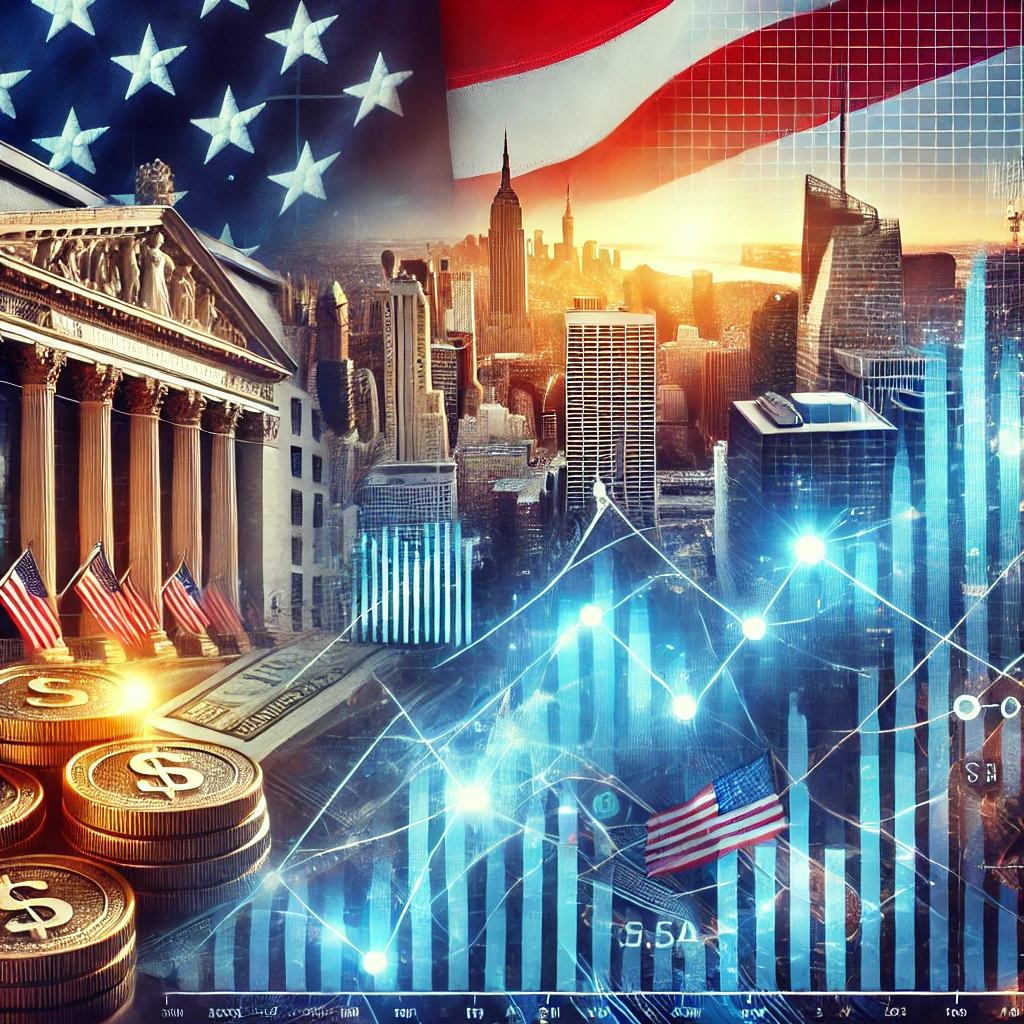
Introduction
The United States has one of the most influential and dynamic economies in the world. As the largest global economy, it plays a crucial role in international trade, finance, and innovation. With a GDP surpassing $25 trillion, the U.S. economy is driven by diverse sectors, including technology, finance, healthcare, and manufacturing. This article provides an in-depth look at the U.S. economy, its financial system, and the factors influencing its stability and growth.
Historical Overview of the U.S. Economy
The economic foundation of the United States was established in the late 18th century with a primarily agrarian economy. Over time, industrialization in the 19th and early 20th centuries transformed the nation into a global economic powerhouse. The Great Depression of the 1930s marked a significant downturn, but the post-World War II period ushered in unprecedented growth. The U.S. emerged as the dominant global economy, driven by technological advancements, innovation, and free-market capitalism.
Key Sectors of the U.S. Economy
- Technology: The U.S. is home to major tech companies like Apple, Google, Microsoft, and Amazon. Silicon Valley remains the global hub for innovation, driving advancements in artificial intelligence, cloud computing, and cybersecurity.
- Financial Services: Wall Street, centered in New York City, is the financial capital of the world. The U.S. banking system includes major institutions such as JPMorgan Chase, Goldman Sachs, and Citibank, which facilitate investments, trade, and economic expansion.
- Healthcare: The healthcare industry contributes significantly to the economy, with pharmaceutical companies, medical research, and hospitals playing a vital role in employment and GDP growth.
- Manufacturing: Despite the rise of service-based industries, manufacturing remains a critical component of the U.S. economy. Automobiles, aerospace, and consumer goods production contribute significantly to exports and job creation.
- Energy: The U.S. is a leading producer of oil and natural gas, with significant investments in renewable energy sources like solar and wind power.
Monetary Policy and the Role of the Federal Reserve
The Federal Reserve, commonly known as the Fed, is responsible for regulating monetary policy, controlling inflation, and stabilizing financial markets. Through tools like interest rate adjustments and open market operations, the Fed ensures economic stability. In response to economic crises, such as the 2008 financial collapse and the COVID-19 pandemic, the Fed implemented measures like quantitative easing to support the economy.
U.S. Fiscal Policy and Government Spending
The U.S. government plays a significant role in the economy through fiscal policy, which includes taxation and public spending. Key areas of government expenditure include:
- Defense: The U.S. has the largest military budget in the world, accounting for a substantial portion of federal spending.
- Social Security and Medicare: These programs support retirees and provide healthcare to millions of Americans.
- Infrastructure and Education: Investments in roads, transportation, and education contribute to long-term economic growth.
Taxation policies, including corporate and individual income taxes, influence consumer spending and business investment. The national debt, which exceeds $30 trillion, is a growing concern for policymakers.
International Trade and the U.S. Economy
As a major player in global trade, the U.S. imports and exports billions of dollars in goods and services each year. Key trading partners include China, Canada, Mexico, and the European Union. Trade agreements, such as the USMCA (United States-Mexico-Canada Agreement), impact industries like agriculture, automotive manufacturing, and technology.
Challenges Facing the U.S. Economy
- Inflation and Rising Interest Rates: Inflationary pressures, particularly after the COVID-19 pandemic, have led to increased interest rates to curb excessive price growth.
- Income Inequality: Economic disparities between the wealthy and lower-income populations continue to widen, raising concerns about social mobility and economic fairness.
- Global Competition: Emerging economies like China and India present challenges to U.S. dominance in technology and manufacturing.
- Climate Change and Sustainability: The shift toward renewable energy and climate policies affects industries reliant on fossil fuels.
Conclusion
The U.S. economy remains one of the most powerful and resilient in the world. With strong financial institutions, technological innovation, and a diverse industrial base, it continues to be a driving force in global economic trends. However, challenges such as inflation, trade policies, and income inequality require careful management to ensure sustainable growth. As the economic landscape evolves, the United States must adapt to new global realities while maintaining its position as a financial and economic leader.

Leave a Reply